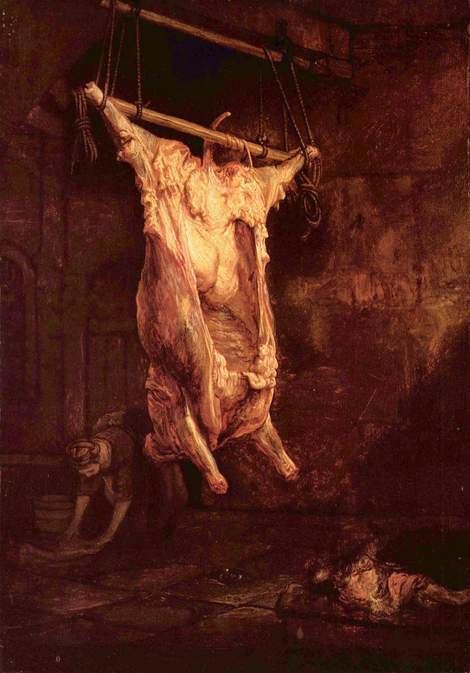Genre Genre art Media Oil paint | Dimensions 94 cm x 69 cm Created 1655 Periods Baroque, Dutch Golden Age | |
 | ||
Similar Rembrandt artwork, Baroque artwork, Oil paintings | ||
David burton richardson the slaughtered ox 1979 lost masterpiece found
Slaughtered Ox, also known as Flayed Ox, Side of Beef, or Carcass of Beef, is a 1655 oil on beech panel painting by Rembrandt. It has been in the collection of the Louvre in Paris since 1857. A similar painting is in Kelvingrove Art Gallery and Museum, possibly by Rembrandt himself but probably by one of his pupils, perhaps Fabritius. Other similar, paintings attributed to Rembrandt or his circle, are held by museums in Budapest and Philadelphia.
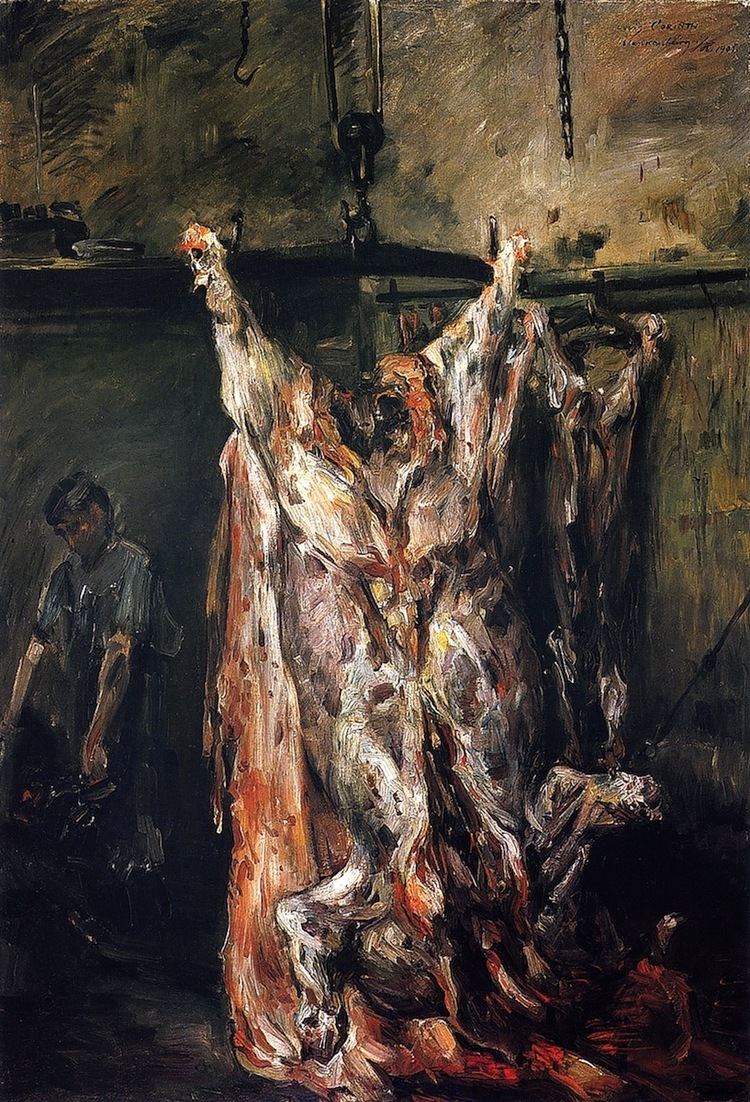
The work follows in a tradition of showing butchery, for example Pieter Aertsen's A Meat Stall with the Holy Family Giving Alms and Annibale Carracci's Butcher's Shop. Rembrandt made a drawing of a similar scene c.1635. Another, pre-1655, painting of a slaughtered ox (the example in Edinburgh, now attributed to Rembrandt's circle but formerly to Rembrandt) was perhaps inspired by a lost earlier work by Rembrandt himself. In northern Europe, the month of November was traditionally the season slaughtering livestock in northern Europe, before winter made feed difficult to find.
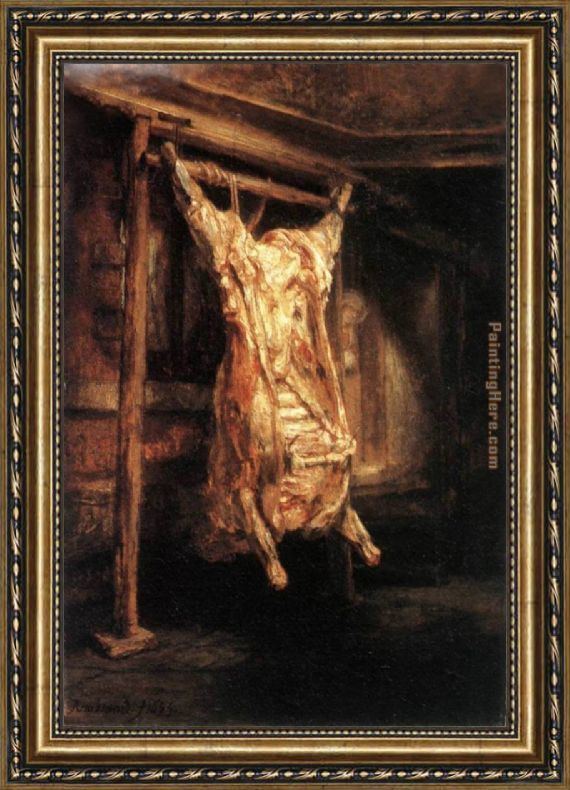
The still life painting measures 95.5 by 68.8 centimetres (37.6 in × 27.1 in), and is signed and dated "Rembrandt f. 1655". It shows a butchered carcass of a large bovine, a bull or an ox, hanging in a wooden building, possibly a stable or lean-to shed. The carcass is suspended by its two rear legs, which are tied by ropes to a wooden crossbeam. The animal has been decapitated and flayed of skin and hair, the chest cavity has been stretched open and the internal organs removed, revealing a mass of flesh, fat, connective tissue, joints, bones, and ribs. The carcass is carefully coloured, and given textures by impasto. In the background, a woman's head and body of a woman appear at a door, lifting the painting from still life into a genre painting, a scene of normal everyday life. It is sometimes considered a vanitas or memento mori; some commentators make references to the killing of the fatted calf in the biblical story of the Prodigal Son, others directly to the Crucifixion of Jesus.
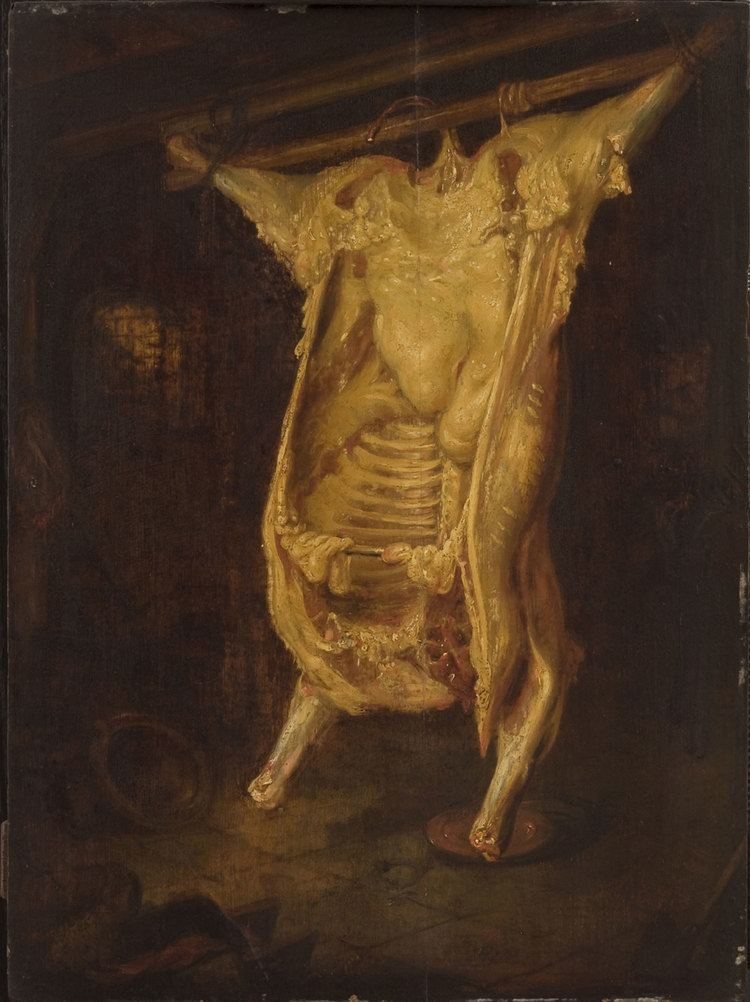
The painting was possibly owned by Christoffel Hirschvogel in 1661. It was viewed by Joshua Reynolds in the collection of Pieter Locquet in Amsterdam in 1781, and later owned by Louis Viardot, who sold it to the Louvre in 1857 for 5,000 francs.
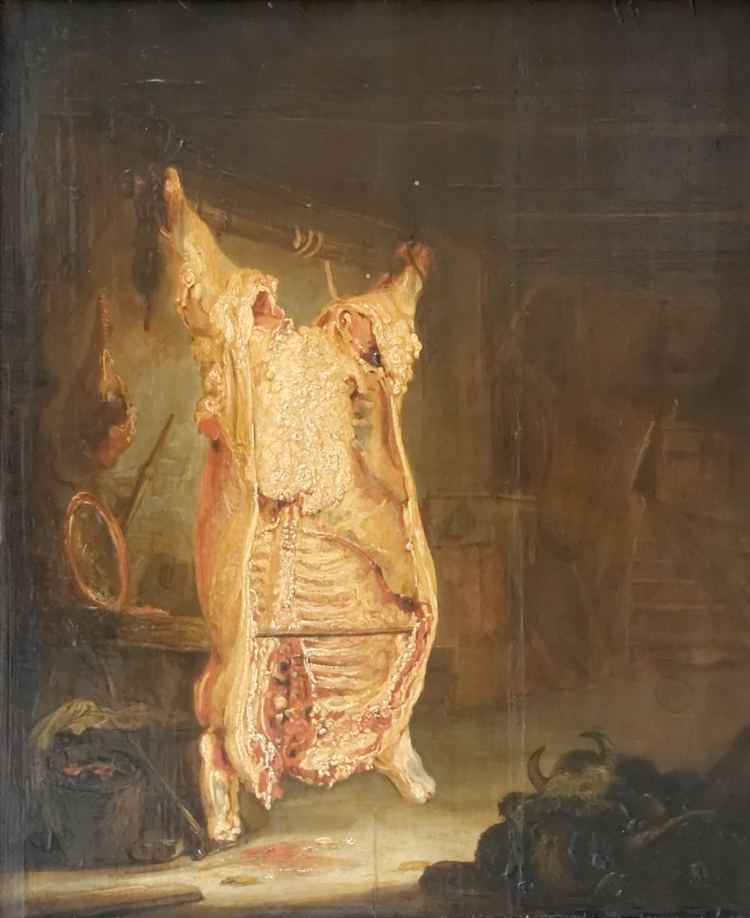
The work's muscular meatiness inspired a series of works the French painter Chaim Soutine, and in turn the English painter Francis Bacon, most particularly Bacon's Figure with Meat, in which be depicts Pope Innocent X, as painted by Velazquez, accompanied by ghostly echoes of the carcass from Rembrandt's painting.
